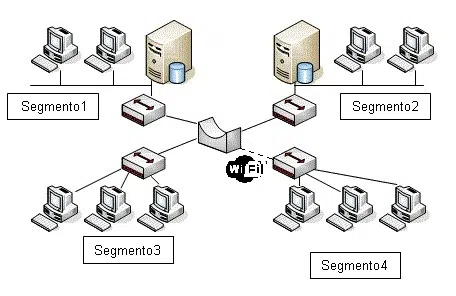
A network bridge allows networks to be interconnected in different ways.
Interconnect networks
From these ideas we can move forward with the definition of a network bridge . This is the name given to the device that allows computer networks to be interconnected .
A network bridge or bridge develops its operations at the data link level or layer 2 of the open systems interconnection ( OSI ) model. What it does is link network segments , transferring data from one sector to another based on the destination physical address found in each of the packets.
By connecting the spans, the network bridge creates a subnet. It appeals to MAC addresses to connect segments, joining devices without resorting to a router or router. These network bridges copy the frame to transmit data from one node to another.
Classifications
There are at least two ways to classify network bridges: taking into account their interface or their geographical location. The first criterion gives us the following two types:
* homogeneous network bridge : used to interconnect local area networks that have the same MAC protocol. In other words, it does not convert protocols but simply stores and forwards frames. As an example of this type of bridge we can mention the Ethernet switch ;
* heterogeneous network bridge : as the name implies, it must interconnect different types of interfaces. To do this, it has a higher entity that is responsible for transforming the headers. A clear example is an access point of a Wi-Fi network, where frames are received with a Wi-Fi type interface and then transformed into Ethernet to finally send them.
With respect to geographical location, we can recognize the following two types of network bridges:
* local : used to interconnect two networks that are within a short physical distance;
* remote : also called wide area , and is used to try to link a minimum of two local networks and form a wide area network through telephone lines.
Advantages and disadvantages
The use of a network bridge for the interconnection detailed above presents a series of advantages, but also disadvantages. In the first group we have the following:
* It is usually an affordable device, making it ideal for low-budget users;
* since it segments the network, it allows isolating collision domains;
* does not require configuration before use;
* allows you to manage the network and control access to it.
Regarding its disadvantages, we can mention:
* does not use broadcast to limit the number of forwards;
* not easy to scale if we want to use it for high volume networks;
* causes certain delays in saving and processing data;
* In the most complex networks, loops may arise in the transmission of data, so that they never reach their destination because they remain traveling the same paths over and over again. To reduce this risk, it is possible to use the protocol called spanning tree .

An Ethernet cable, used in devices such as network bridges and routers, among others
Confusion with router, hub and switch
Many times confusion occurs between devices such as the network bridge, the router , the hub and the switch , since they are all used in networks. While both the bridge and the router route data, the bridge operates at level 2 and the router at level 3.
A hub , meanwhile, repeats the frames with any destination, but the network bridge only forwards the frames corresponding to the segment in question. A switch, finally, contains a greater number of interfaces compared to a bridge.
